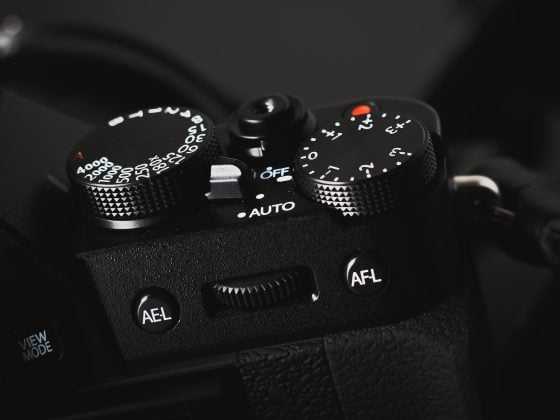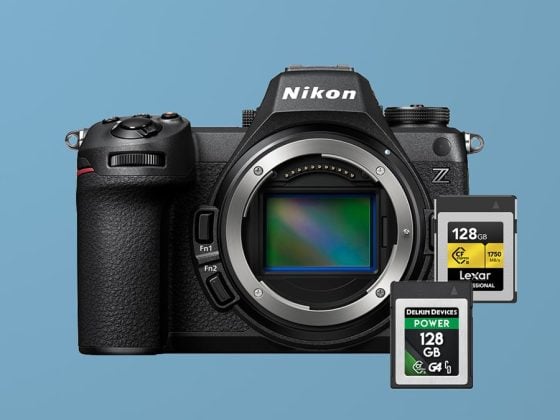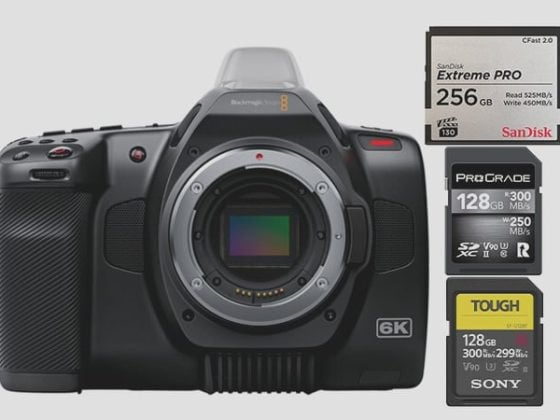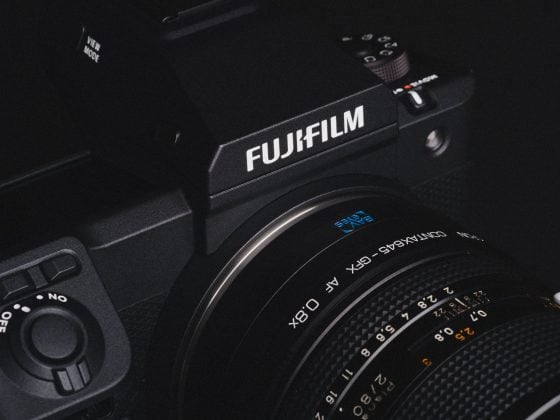A memory card speed comparison between all the most popular CF and SD cards taken in the Canon 5DS R.
This guide will help you to configure a dual memory card setup to gain maximum performance out of your Canon 5DS R.
Camera Stats
RAW Shots taken to fill buffer: 13-14
Size of RAW files: 52.6 MB
Size of JPEG files: 9 MB
Est. Size of buffer: 512MB
Canon 5DS – Amazon / Adorama / BHphoto
Canon 5DS R – Amazon / Adorama / BHphoto
Best Memory Card For The Canon 5DS R
I recorded a series of images on continuous burst Hi and the time it took to write to the card. Each card was tested several times in camera and the average was taken.
| Compact Flash CF Card | Read MB/s | Write MB/s | Canon 5DS R Speeds |
| KomputerBay 32GB 1066x UDMA 7 | 153.34 MB/s | 135.90 MB/s | 78.21 MB/s |
| Lexar 32GB 1066x UDMA 7 | 155.50 MB/s | 138.40 MB/s | 77.51 MB/s |
| KomputerBay 32GB 1000x UDMA 7 | 147.80 MB/s | 134.90 MB/s | 76.98 MB/s |
| Toshiba 32GB 1066X UDMA 7 | 158.00 MB/s | 134.30 MB/s | 76.89 MB/s |
| Sandisk 32GB Extreme Pro UDMA 7 | 154.90 MB/s | 135.20 MB/s | 76.53 MB/s |
| Transcend 32GB 1000x UDMA 7 | 155.30 MB/s | 132.80 MB/s | 76.40 MB/s |
| Kingston 32GB 600x UDMA 6 | 114.90 MB/s | 101.70 MB/s | 73.82 MB/s |
| PixelFlash 32GB 1106x UDMA 7 | 154.34 MB/s | 90.71 MB/s | 69.28 MB/s |
| Sandisk 32GB Extreme UDMA 7 | 118.10 MB/s | 68.43 MB/s | 53.78 MB/s |
| Lexar 32GB 800x UDMA 7 | 152.70 MB/s | 44.72 MB/s | 38.35 MB/s |
| Transcend 32GB 800x UDMA 7 | 152.30 MB/s | 40.25 MB/s | 34.77 MB/s |
| Transcend 32GB 400x UDMA 7 | 152.50 MB/s | 39.55 MB/s | 34.24 MB/s |
| KomputerBay 32GB 600x UDMA 7 | 85.77 MB/s | 51.16 MB/s | 27.36 MB/s |
| KomputerBay 32GB 800x UDMA 7 | 86.42 MB/s | 50.83 MB/s | 27.29 MB/s |
| UHS-II SD CARDS | |||
| Lexar 32GB 2000x UHS-II | 280.9 MB/s | 181.4 MB/s | 64.63 MB/s |
| Delkin 32GB UHS-II | 245.1 MB/s | 164.6 MB/s | 62.59 MB/s |
| Sandisk Extreme Pro 32GB UHS-II | 257.3 MB/s | 109.9 MB/s | 37.04 MB/s |
| Lexar 32GB 1000x UHS-II | 145.0 MB/s | 60.7 MB/s | 53.14 MB/s |
| UHS-I SD CARDS | |||
| Sandisk Extreme Pro 64GB SDXC U3 | 89.0 MB/s | 84.7 MB/s | 67.23 MB/s |
| Kingston 64GB SDXC U3 | 88.1 MB/s | 74.3 MB/s | 66.32 MB/s |
| Samsung Pro 64GB SDXC U1 | 86.8 MB/s | 77.2 MB/s | 60.29 MB/s |
| Sony 64GB SDXC U3 | 87.2 MB/s | 71.9 MB/s | 59.47 MB/s |
| PNY 64GB SDXC U3 | 87.9 MB/s | 61.6 MB/s | 51.34 MB/s |
| PNY 64GB SDXC U1 | 86.1 MB/s | 54.5 MB/s | 51.22 MB/s |
| Transcend 64GB SDXC U3 | 87.7 MB/s | 64.1 MB/s | 51.13 MB/s |
| Lexar 600x 64GB SDXC U1 | 85.6 MB/s | 60.1 MB/s | 50.83 MB/s |
| Sandisk Extreme Plus 64GB SDXC U3 | 88.9 MB/s | 62.0 MB/s | 50.81 MB/s |
| Sandisk Extreme 64GB SDXC U3 | 71.3 MB/s | 52.1 MB/s | 44.28 MB/s |
| Samsung 64GB U1 EVO | 43.9 MB/s | 22.7 MB/s | 22.71 MB/s |
CF cards are the fastest in camera with the best card being the Komputerbay 1066x. UHS-II cards perform the quickest with USB 3.0 read and write speeds and the UHS-I cards seem to be the best value while also maintaining great speeds.
Best CF Memory Cards For The Canon 5DS R
The Fastest CF cards are the Komputerbay, Lexar, Toshiba, Sandisk and Transcend. The 1 MB/s difference they make won’t really matter in real world shooting and there will be a slight variance between every card. Buy the brand you trust the most, for me it’s Lexar and Sandisk.
- Komputerbay 1066x – 32GB Amazon / 64GB Amazon / 128GB Amazon
- Lexar 1066x – 32GB Amazon / 64GB Amazon / 128GB Amazon
- Toshiba 1066x – 32GB Amazon / 64GB Amazon
- Sandisk Extreme Pro – 32GB Amazon / 64GB Amazon / 128GB Amazon
- Transcend 1000x – 32GB Amazon / 64GB Amazon
Best SD Memory Cards For The Canon 5DS R
I’m really glad Canon finally upgraded the SD memory card slot in the new 5D. The previous Canon 5DmkIII didn’t support UHS-I bus speeds and that slot was really only good for JPEG backups.
The new 5DS SD card write speeds are very fast, destroying the Sony A7rII at write speeds that cap out at 32MB/s.
Should You Buy A UHS-II Card?
Does the Canon 5DS support USH-II memory cards? Short answer, no!
The Canon 5DS R doesn’t take advantage of in camera UHS-II speeds and you would only be buying them for the USB 3.0 transfer speeds, which isn’t a bad idea especially if you’re filling these cards up a lot.
Since my Sandisk card seems to be very slow in non UHS-II camera bodies, I would stick with the Lexar 2000x card. It’s always been my fastest UHS-II card when tested and it’s the best one right now. There is also a Toshiba on the market that’s also really good.
See the UHS-II Memory Card Reader Speed Test to see which is the fastest.
Should You Buy A UHS-I Card?
The Canon 5DS does now supports UHS-I and there are so many great deals. If you’re thinking of running a single card configuration and want to save money, you might as well go with SD cards. The quality is fine, I’ve used them on my Sony A7r and Fujifilm cameras for years without ever having a problem.
If you’re running two cards, then you will need an SD memory card. There are also less expensive options that are still great.
From what I understand, if you’re shooting with two cards one as backup, the slowest card will cap the speed at which the buffer is cleared. This means you should buy the fastest SD card if you’re running a dual card setup.
- Sandisk Extreme Pro SDXC U3 64GB – Amazon
- Kingston SDXC U3 64GB – Amazon
- Samsung SDXC U1 64GB – Amazon
- Sony SDXC U3 64GB – Amazon
Canon 5DSR Memory Card Configurations
There is no best configuration for the Canon 5DS R but I’ll go over a few scenarios.
RAW To Slot 1, JPEG to Slot 2
This is handy for client shoots where you want the client to just walk with some JPEG on the SD card to review, while you keep the RAW on the CF card.
RAW Slot 1, Backup to Slot 2
For everyone else, this is the ideal setup. You might not think you need this, but it’s there so you might as well use it. Just have everything backup to an SD card just incase anything ever happened to your CF card. Which will . . . someday.
If you want, just get a 128GB SD backup card and forget about it for a few weeks. When you know everything is safe and secure, wipe the backup card.
Overflow, Slot 1, then Slot 2
If you have to use this then you’re asking for trouble. I would just make sure you have a big enough CF card to never have this happen.
Are CF Cards Better Than SD Cards?
This camera seems to bottleneck at around 78MB/s, so when it comes to speed, the CF cards aren’t dramatically faster than SD cards.
SD cards are still less expensive, smaller and a lot lighter. I personally prefer them.
Best Memory Cards For The Canon 5DS Conclusions
You now have a choice between UHS-I, UHS-II or CF cards. Whatever you choose, you should be fine. UHS-I speeds are fantastic, but with CF cards, you have the option to have an SD backup, which is super important for some people.
I personally would go with a CF card and possibly a larger SD card as backup if I had this camera. Just be sure to test whatever card you get right when you get it. Don’t hesitate to send it back if it’s being weird. I’ve had problems with even the best brands of cards and I get emails from people with problems with cards, so it does happen and it’s not uncommon.
| **This website contains affiliate links. We will earn a small commission on purchases made through these links. Some of the links used in these articles will direct you to Amazon. As an Amazon Associate, I earn from qualifying purchases. |






